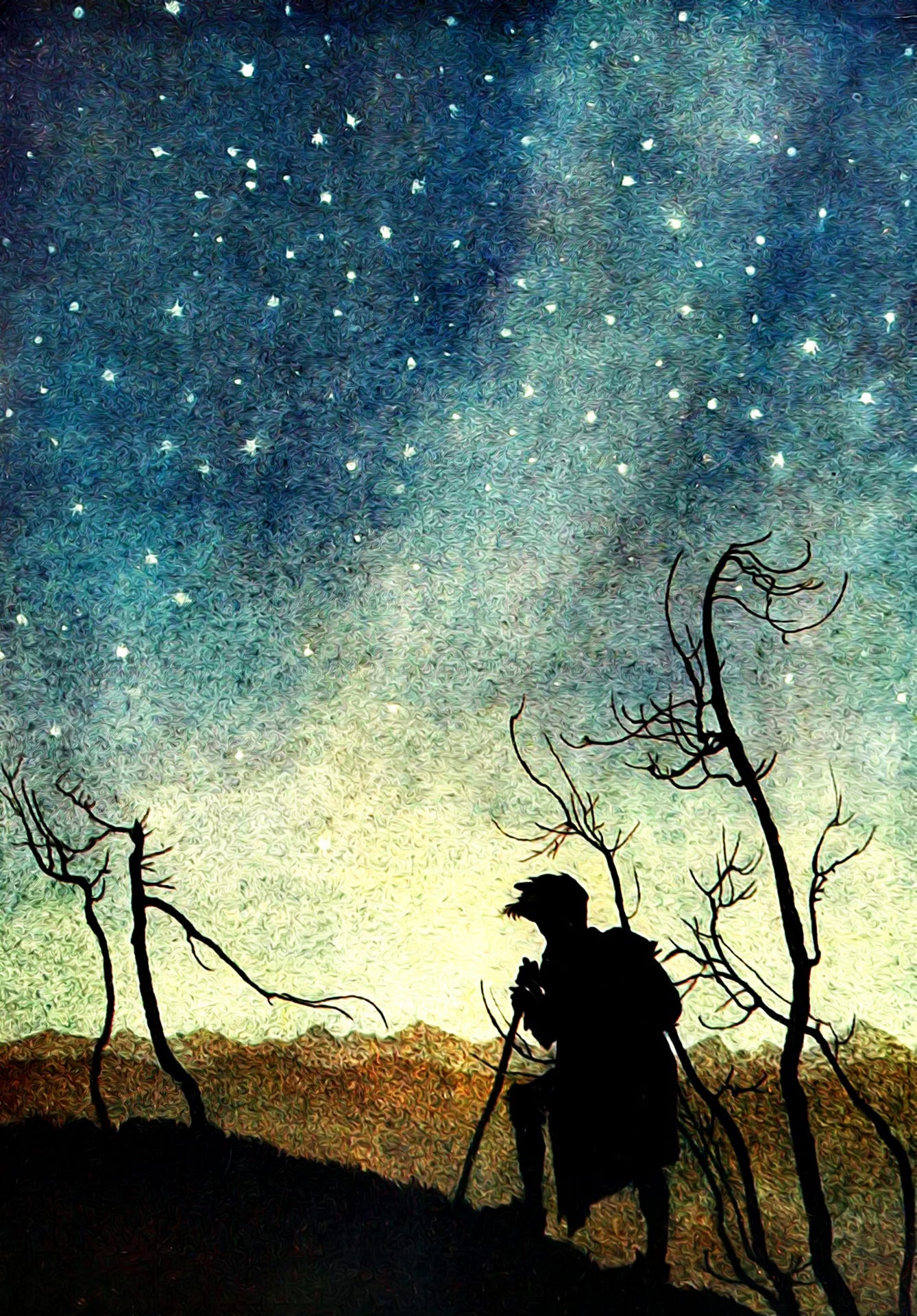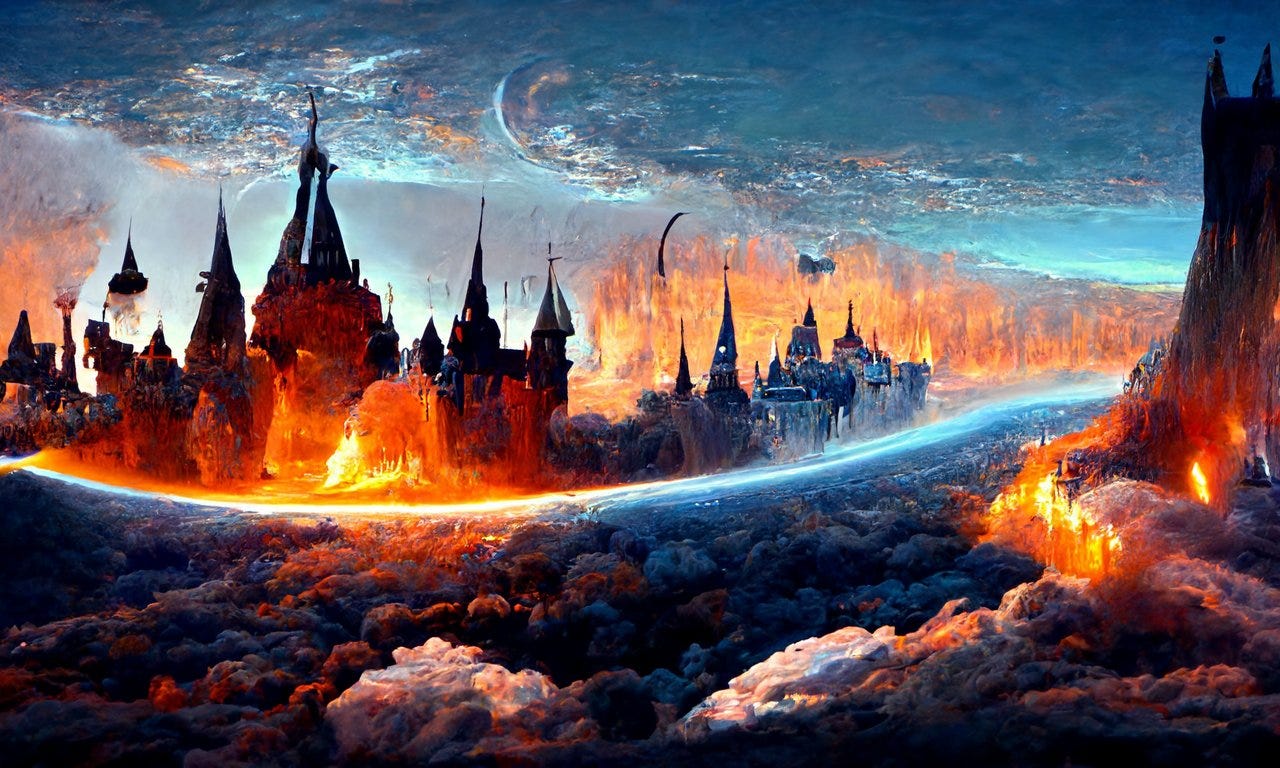
It feels so strange to be doing a two part post, but here we are. I guess this is where the recap section goes, eh? Well, if you want the full pie, follow this link to Part I of A Light in the Woods, where you can find all the folklore that I will be pulling from today.
Actually, you should definitely follow that link, otherwise a lot of what I’m about to reference will make ZERO sense. Or don’t. It truly is your life.
Now, I’ve given a lot of thought to what comes next here. Kinda. Regardless, folk always expect you to come up with a “framework” or “method of analysis” yadda yadda yadda. That’s helpful when running a game. When you are establishing repeatable processes so your mind can be free to do other things.
Maybe we’ll get there, one day. But not today.
Today, let us begin with a brief summary of the elements from Part I of this posting:
In folkloric traditions (Appalachian, Japanese, Finnish, etc.) there are numerous observed examples of mysterious lights appearing near or around the dead. These lights may be found dancing over graves, cemeteries, and old battlefields, most often colored blue (sometimes red, orange, or yellow). In one vivid tale, a yarnweaver recounts how this effect is phosphorescent gas escaping up through cracks in the ground.
There is a long association between fire and foxes. From literal “foxfire” - a catchall term for numerous bioluminescent fungi that feast on dead wood) to myths of lights in the night coming from foxes striking their tails to produce flame, gnawing on glowing bones, and even setting the sky aflame with their fur.
Finally, these mysterious lights tend to appear after rain, in damp areas, or in other places of swampy persuasion.
The next part is to develop some legends around these themes - I am going to bite heavily off of Finnish and Japanese folklore here, but I will also incorporate some descriptions from Appalachian folklore. In the first post, I detailed several dramatized reports of lights in the Deepwood, which lies on the border of the Barony of Blegokara (rough sketch of a map above).
Soulfire - Wandering Breath of the Dead

Building off the idea of foxfire / glowing lights in the forest as spirits of the dead, I came up with a concept of Soulfire, a type of ghost or apparition that appears in the Deepwood.
Contrary to popular belief, Soulfires are not overtly malicious, but they have led many an unwary traveler and even experienced hunter to their doom in the Deepwood. For they are in truth embodied spirits of the Dead that seek to find their way through the cracks that spiderweb their way through the Deepwood, and unto the realms beyond the crust of the mortal plane.
They appear on nights when the air in the Deepwood hangs heavier than a wool blanket in a rainstorm, when you can feel your lungs fill with moisture. Then, Soulfires sprout all around the Deepwood glowing blue and green, almost indistinguishable from the lights of Henkara seen through the arboreal verdance of the forest. They move through the air with the sound of rushing water and crackling flame, searching for a way down — and out.
Rather than simply incorporate will-o-the-wisps or even the idea of onibi, I wanted to invert several themes and descriptions, the first being spirits of the Dead that seek to find their way OUT of this realm - many myths of lights in the woods hold that they are spirits of the dead, but malicious ones, seeking to lure folk to their doom if disturbed.
The second is the idea of gas escaping up through cracks in the ground…but flip directionality on its head, and we are left with a melancholic sense of loss as the little Soulfires - the spirits of those we loved (and hated) - flitter around through a hoary forest seeking to leave this plane of existence, as though it is we are the ones who are trapped.
That is perhaps the point that a poet like Tomayre Fosfor,1 a resident of the little hunting village on the edge of the pond called Henkara, is trying to get across with his small poems and rhymes.
And it is the question that irks Lucy Pheraze2, Royal Botanist to Baron de Brac in Blegokara, which she is fond of putting bluntly as “Where are they going?“
I'm not quite sure myself, so I’ll leave it up to you to decide where Soulfire goes if it can slip through the cracks in the Deepwood. I may return to Soulfire - and to Tomayre and Lucy over on my Patreon - to flesh it out a bit more as an interactable phenomenon for TTRPGs, but I want touch on another theme.
Kuoket - the Burning Fox
Another concept that I am toying with is the kuoket, a mythical fox spirit that lives in the Deepwood, inspired by both the tulikko of Finnish folklore and the kitsunebi of Japanese folklore. In my head, I envision the kuoket as either one of two things (maybe both, who knows!):
Multiple kuokets that roam the Deepwood and act as guides or shepherds for Soulfires. They are solitary and territorial, and tend to avoid humanoids, but may be seen moving along as a bobbing light in the dark forest. The spirit-kuokets would be more in line with a kitsune figure, though again by applying the inversion principle, they are solitary and avoid humans, though they may be attracted by the presence of fire. If you find a gnawed bone in the Deepwood glowing blue, the locals say, it has been “kissed by a kuoket.”
A single, greater kuoket known as Tsikune3 that is almost of deific status, or perhaps it is simply a deity of the lands that the Barony of Blegokara sits on. In either case, I imagine the god-kuoket as a deity of death and life - it consumes the souls of the Dead (bye bye everything I wrote above) and soulfire is actually just its saliva, which are released in an aurora over the Barony to eventually find their way into new bodies. Or perhaps, they are just eaten.
I’m not quite certain which version I prefer. The Honorable Tuliko Revontuliet (bet you can’t guess where I got THAT name), a diplomat from the northern realm of Yokaye4, probably believes in the latter version.
Let me know which version you prefer in the comments!
The Deepwood - A Scar upon the Land

The location of a long-forgotten catastrophe, the Deepwood takes its name from the curious trees, tall yet broad trunked, with ridged bark and wide, almost box-like leaves. The ridges on these trees are actually pores that open in the hours after a rain fall, releasing a dense pollen (or perhaps spores?).
It is these moments that Soulfire waits for, as the trees of the Deepwood–sensibly called Yawnish by the locals–ward the opening to the lands beyond the crust of the mortal realm, yet when it rains so hard that the land floods and mysterious lights lights dance in the trees even as light burns the sky, then the wall between the worlds softens, and Soulfire can slip down through the pores, deep into the cracks in the earth, and away.
Sometimes, however, other things climb up from wherever Soulfire goes…perhaps that is how the kuoket (if we go with Definition 1) came into this world. Perhaps that is how the ailik got here (yeah you’ll just have to wait to find out what an ailik is).
But most folk know nothing of this. To them, the Deepwood is a place of bounty and loss, of comfort and fear. The hunters of Henkara that set out into the wood know this, and yet still they ply their trade, as their forebearers did. This duality, I think, defines life in the Barony of Blegokara.
That’s all we have time for in this post, though I would really like to return to these themes in a longer post and elaborate upon all the themes that came up here (including the Barony of Blegokara itself), but let me know in the comments what you are most interested in!
Dream big dreams.
N
Fosfor being of course a homonym of Phosphor - I couldn’t resist a little nod to May Justus and the story of phosphorescence.
Another tip of the hat to biophenomena - Luciferase is an enzyme that produces bioluminescence when it oxidizes its substrate. But as I am not a scientist by training, I will not get into this process, but you can read about it here. I did, however, cut the word “Luciferase” into two parts: Luci- and -ferase. From there it’s just a matter of fiddling around with spelling until you find something that looks good! Et voìla, a brief lesson in a Potential Way to Name your Fantasy Characters.
Incidentally, tsukune is a Japanese chicken meatball skewer dish. I swear I didn’t know that going into this.
Yup, like the Yokai of Japanese folklore. I just couldn’t resist, that name is SO cool.




I am team Kuoket version 1.